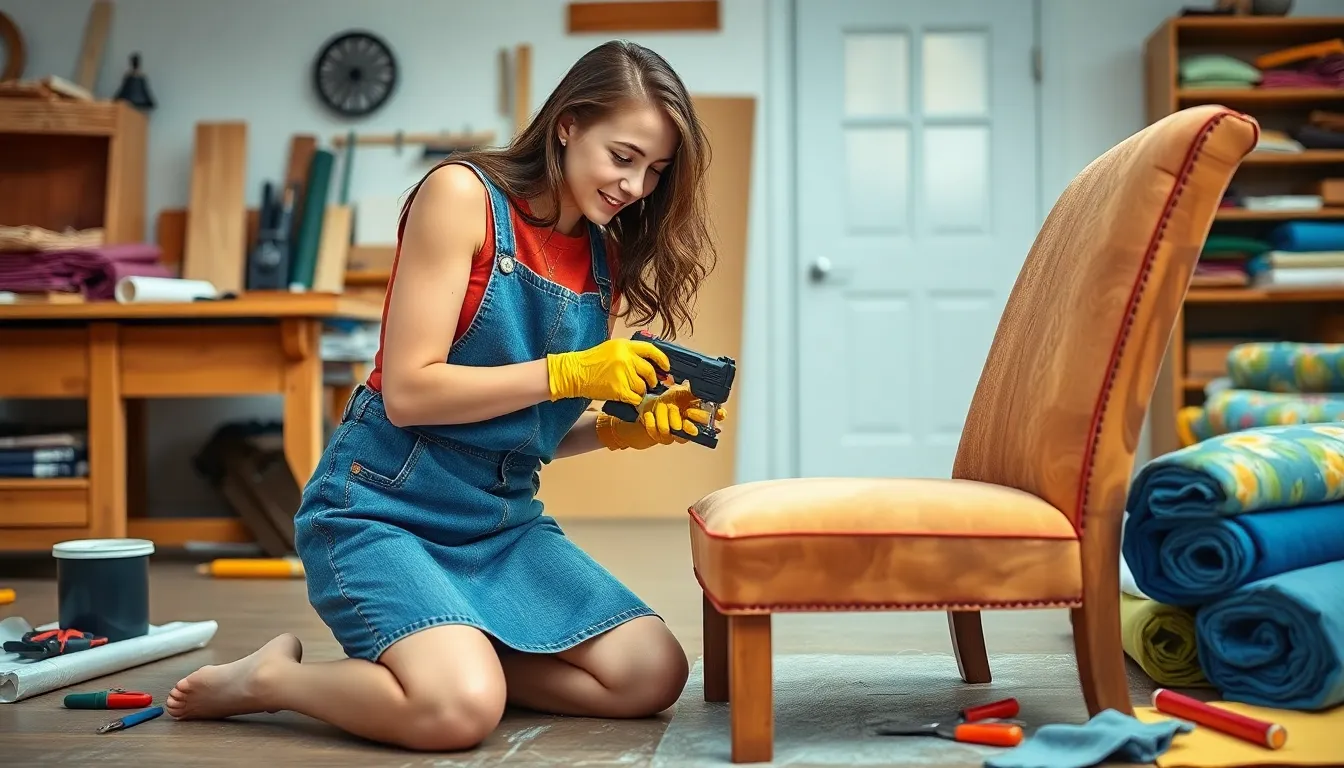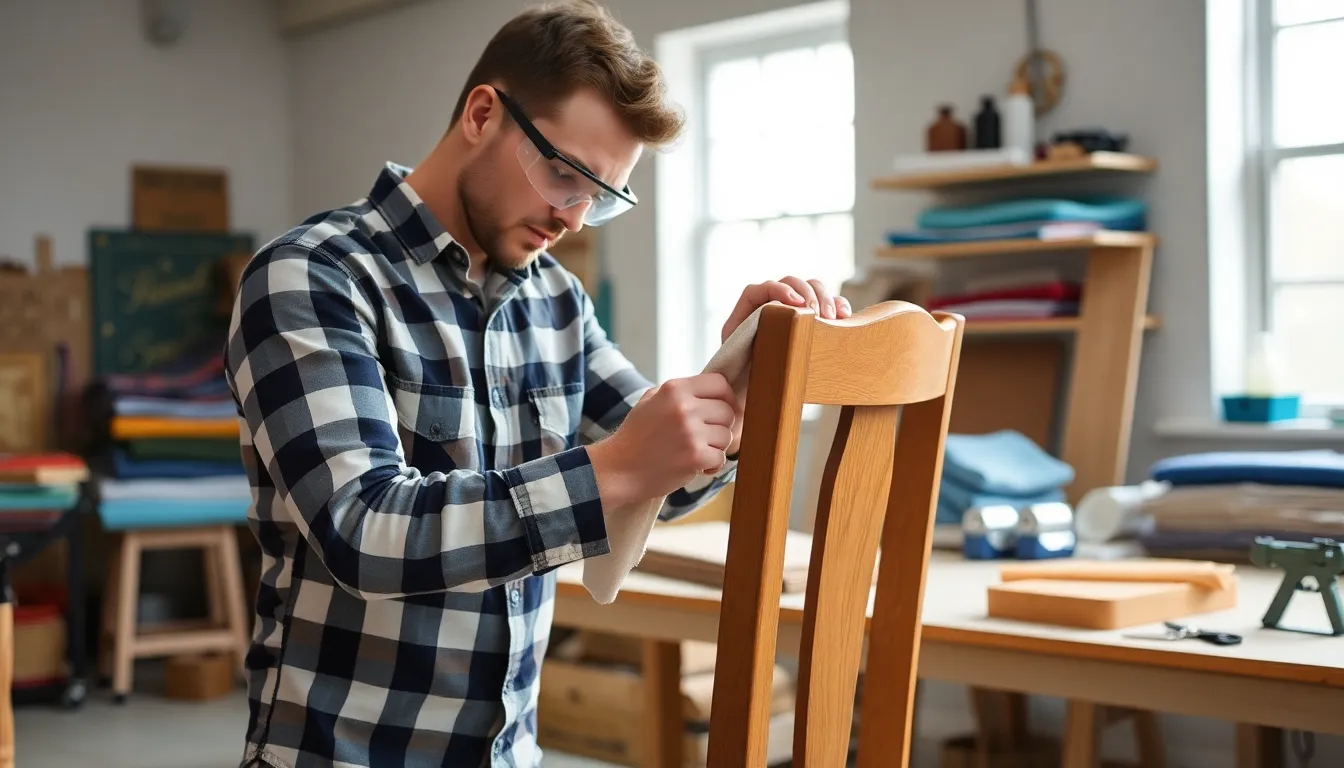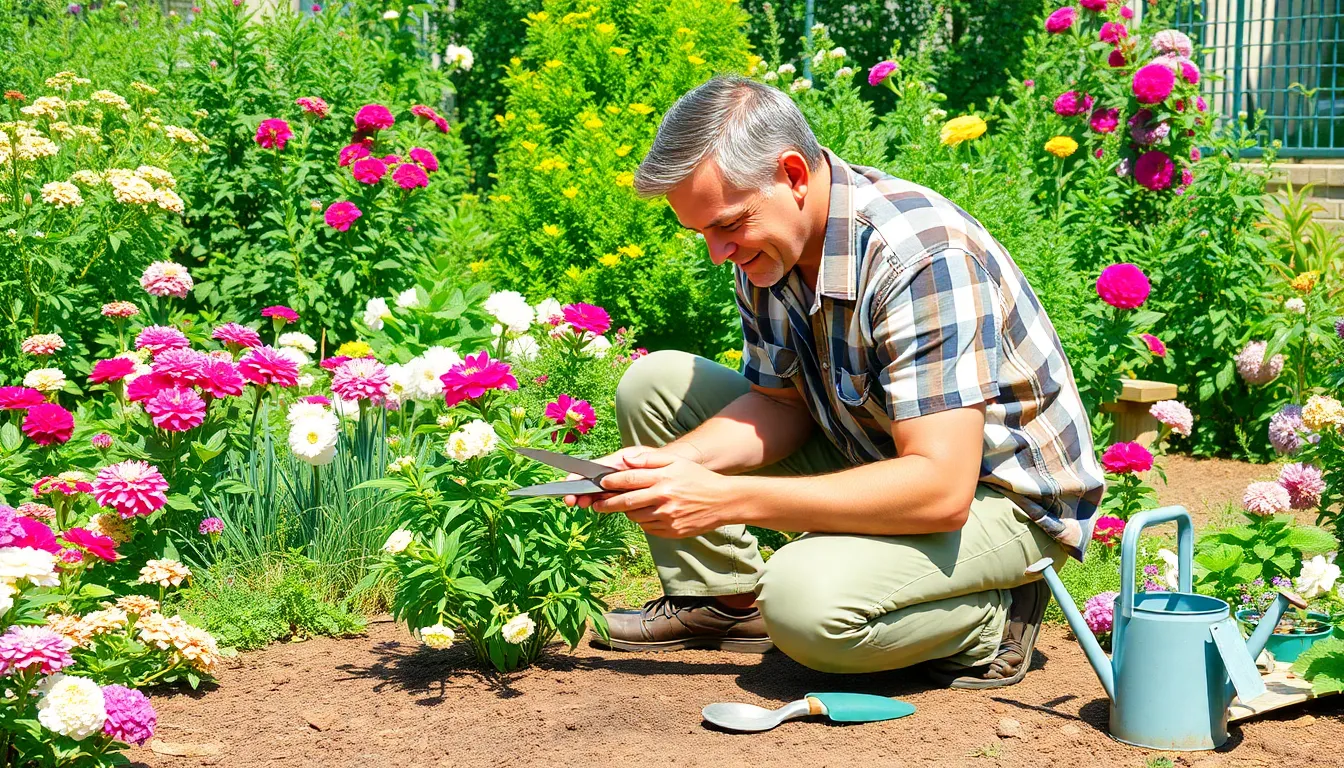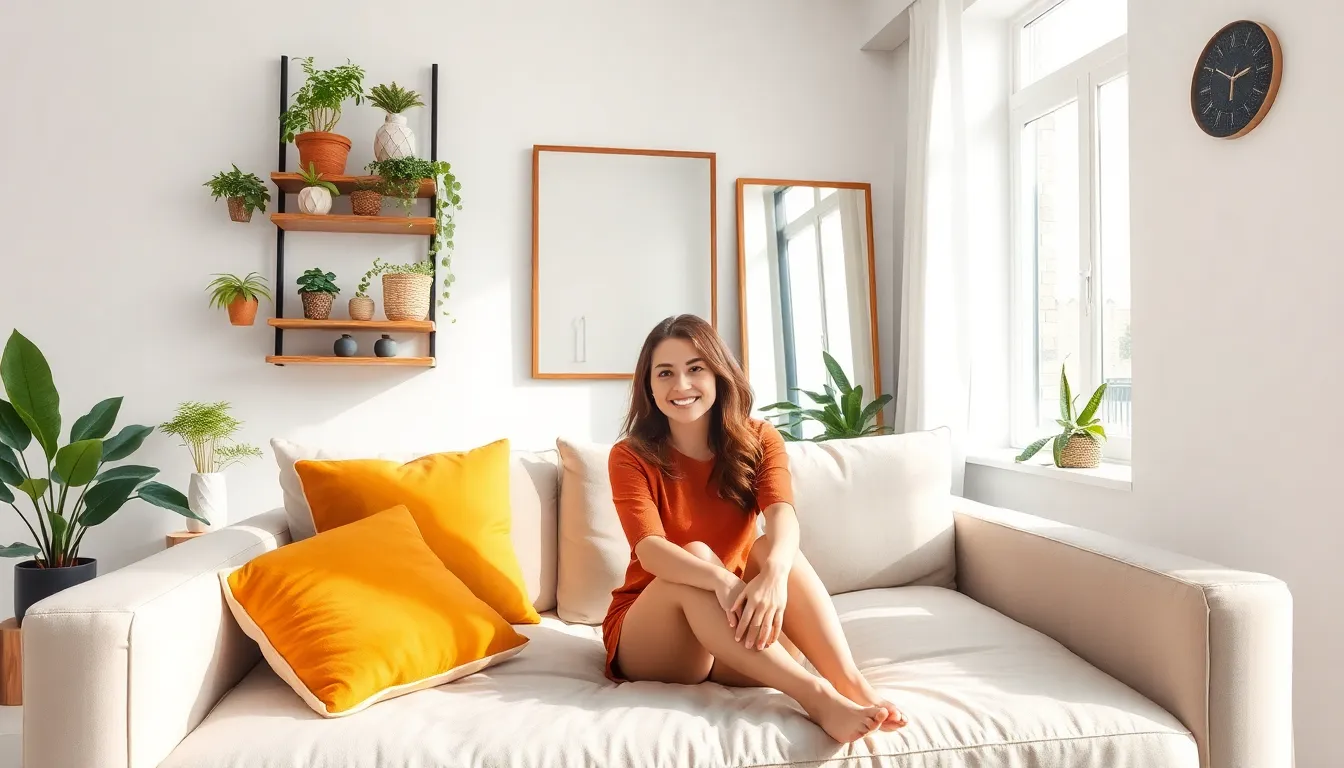Reupholstering furniture might sound like a daunting task reserved for the DIY elite, but it’s actually a fantastic way to breathe new life into tired pieces. Imagine transforming that drab old chair into a fabulous statement piece that’ll have your guests asking if you hired a designer. Spoiler alert: you didn’t!
Table of Contents
ToggleUnderstanding Upholstery
Upholstery involves both craftsmanship and artistry, transforming furniture with new fabrics and padding. This process brings life back to worn pieces, making it important for both aesthetic appeal and comfort.
What Is Upholstery?
Upholstery refers to the process of covering furniture with padding, springs, and fabric. It enhances the overall look while improving the durability of the piece. When done correctly, reupholstering rejuvenates furniture, making it suitable for modern aesthetics. Techniques can vary, but the goal remains the same: to provide functional seating in an attractive manner. Understanding various upholstery methods helps individuals choose the best approach for their projects.
Common Materials Used
A range of materials is commonly utilized in upholstery projects. Fabric types like cotton, linen, and polyester are popular for their durability and variety of designs. Leather offers a luxurious option, though it typically requires more maintenance. Foam padding contributes to comfort and can be customized to fit different seat styles. Additionally, materials like batting and muslin provide essential support layers. Each material choice impacts the final look and wearability of the reupholstered furniture.
Preparing for the Project

Preparation sets the stage for a successful reupholstering project. Gathering materials and planning carefully enhances the end result.
Choosing the Right Furniture
Selecting the right furniture plays a crucial role in reupholstering. Opt for sturdy pieces that warrant a makeover, such as solid wood chairs or well-constructed sofas. Assess the current condition of the furniture. It shouldn’t have significant structural damage. Look for items that match the desired outcome. Vintage styles often provide a unique touch, while modern pieces can adapt to current trends. Avoid oversized items that complicate the process. Smaller pieces typically offer a more manageable task and yield quicker results.
Tools and Supplies Needed
Using the right tools and supplies enhances efficiency during reupholstering. Gather essential tools such as a staple gun, scissors, and a screwdriver. These items help in removing old fabric and reattaching new materials. Pliers assist with handling staples and tacks, ensuring a smooth process. Protecting hands with gloves remains crucial to avoid injuries. Collect necessary supplies like upholstery fabric, batting, and foam padding. Each material impacts the comfort and aesthetics of the finished project. Budget wisely for these items, as costs can vary considerably, from budget-friendly fabrics to high-end materials.
Step-by-Step Reupholstering Process
Reupholstering furniture involves several key steps to achieve a professional-looking finish. Each stage requires attention to detail, ensuring a successful transformation.
Removing Old Upholstery
First, inspect the furniture for staples, tacks, or screws that secure the old upholstery. It’s essential to carefully remove these fasteners using pliers or a flathead screwdriver to avoid damaging the frame. Next, gently pull away the old fabric, paying close attention to the underlying padding. Keep the original upholstery pieces intact, as they serve as patterns for cutting new fabric. Lastly, dispose of the old materials responsibly, ensuring a clean workspace before moving forward.
Preparing the Frame
Start by thoroughly cleaning the frame with a damp cloth to remove dust and debris. Inspecting the frame for any signs of damage is critical; tighten loose parts or repair any structural issues. Applying wood glue or clamps can reinforce weak joints. Next, sand any rough surfaces to create a smooth base for the new upholstery. Finally, use a foam or latex primer to prepare the frame for new padding, which ensures better adhesion and a polished finish.
Adding New Padding
Choosing high-quality padding significantly enhances comfort and durability. Cut the new padding to size using the old padding as a guide. It’s vital to allow for a little extra material around the edges to ensure full coverage. After cutting, secure the padding to the frame with adhesive spray or a staple gun. Next, add layers for added cushioning, if necessary, to achieve the desired softness. Ensuring the padding lies smoothly without lumps or wrinkles contributes to an overall polished appearance.
Upholstering the Furniture
Begin by laying the new fabric face down on a flat surface, then position the furniture frame atop it. Ensure the fabric is evenly spread, allowing for excess on each side for stapling. It’s crucial to start attaching the fabric from the center of one side, working towards the edges for an even finish. Secure the fabric tightly with a staple gun, being careful to maintain tension as you move around the frame. Finally, trim any excess fabric carefully, then finish with decorative tacks or welting for a professional touch.
Finishing Touches
Finishing touches elevate the reupholstering project, ensuring a polished look. Attention to detail during this phase enhances both the aesthetics and longevity of the furniture.
Final Inspection
Inspect the furniture thoroughly to identify any flaws. Check seams and edges to ensure fabric is secure and properly aligned. Look for loose staples or uneven surfaces that require adjustment. Address these issues before considering the project complete. A meticulous examination reveals the quality of the final work and allows for any necessary touch-ups. Make this step a priority to guarantee satisfaction with the end result.
Cleaning and Maintenance Tips
Cleaning fabric upholstery involves using a vacuum to remove dust and debris. Spot-clean stains immediately using a gentle fabric cleaner or a mild soap solution. Consider testing any cleaning product on an inconspicuous area first. For leather upholstery, use a damp cloth and occasional leather conditioner to maintain its appearance. Regular maintenance prolongs the life of the upholstery and keeps the furniture looking fresh. Implementing these strategies ensures the beauty and functionality of the reupholstered furniture endure over time.
Reupholstering furniture is a rewarding endeavor that breathes new life into cherished pieces. With the right materials tools and a bit of creativity anyone can transform an outdated item into a stylish centerpiece. The process not only enhances the aesthetic appeal but also improves comfort and functionality.
By following the outlined steps and paying attention to detail the results can be both professional and satisfying. Regular maintenance will ensure that the newly upholstered furniture remains in great condition for years to come. Embracing this DIY project could lead to stunning transformations that reflect personal style and taste.



